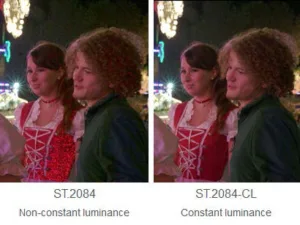At the recent NAB event, Ericsson won the Best Paper award for its paper “Implications of High Dynamic Range on the Broadcast Chain for HD and Ultra-HD Content” which was based on research done in Southampton in the UK and Bedford, NH, in the US.
The group of researchers looked at the implications of a switch to the Electro-Optical Transfer Functions (EOTF) and the Opto-Electrical Transfer Functions (OETF) used in HDR on H.265 compression efficiency and on the artefacts seen in the compression process.
The paper starts with a very thorough review of the reasons for the move to HDR along with the implications for LCD and OLED displays before moving to look at the issues of standardisation which are yet to be settled. Ericsson conducted experiments using HDR content and with a single layer approach (as this is the traditional approach in broadcasting) and did not look at Wide Colour Gamut (WCG) developments. A reference HEVC encoder was used and HDR content was graded with the Rec.709, BBC, ST2084 and ST2084 (constant luminance) EOTFs and an SDR reference was created with Rec.709.
Ericsson’s HDR Test shows artefacts with 4:2:0 subsampling (note sparkle in dress on the left)An early discovery was that when the SMPTE ST 2084 and BBC transfer functions were used, chroma sub-sampling of content from 4:4:4 to 4:2:0 caused some visible artefacts, and were visibly higher for the SMPTE proposal. The researchers suggest that the artefacts are related to the non-linearity of the transfer function. There were chroma bleeding artefacts, but also a “glittering” artefact that is visible on the dress of the woman in the image below. When the constant luminance transformations were applied to ST.2084, the artefacts went away. For the same Quantization Parameter (QP), the constant luminance transformation reduced the overall bitrate.
In conclusion, the authors point out that the effect on the bitrates needed for HDR content are difficult to estimate because the results will depend on the artistic decisions made by content creators. The results suggest that the more non-linear the EOTF, the higher the bitrate needed for a given quality of image, although the reasons for this are not yet clear. The paper points out that the constant luminance versions of the processing chain or staying at 4:4:4 gave better results. The constant luminance version was more efficient than the non-constant version, but the efficiency was less than the other EOTFs.

